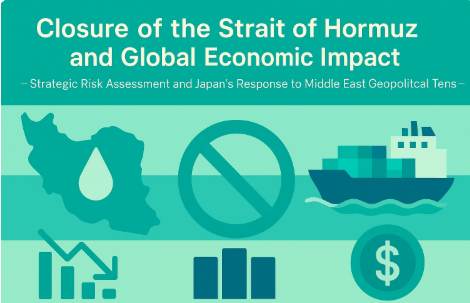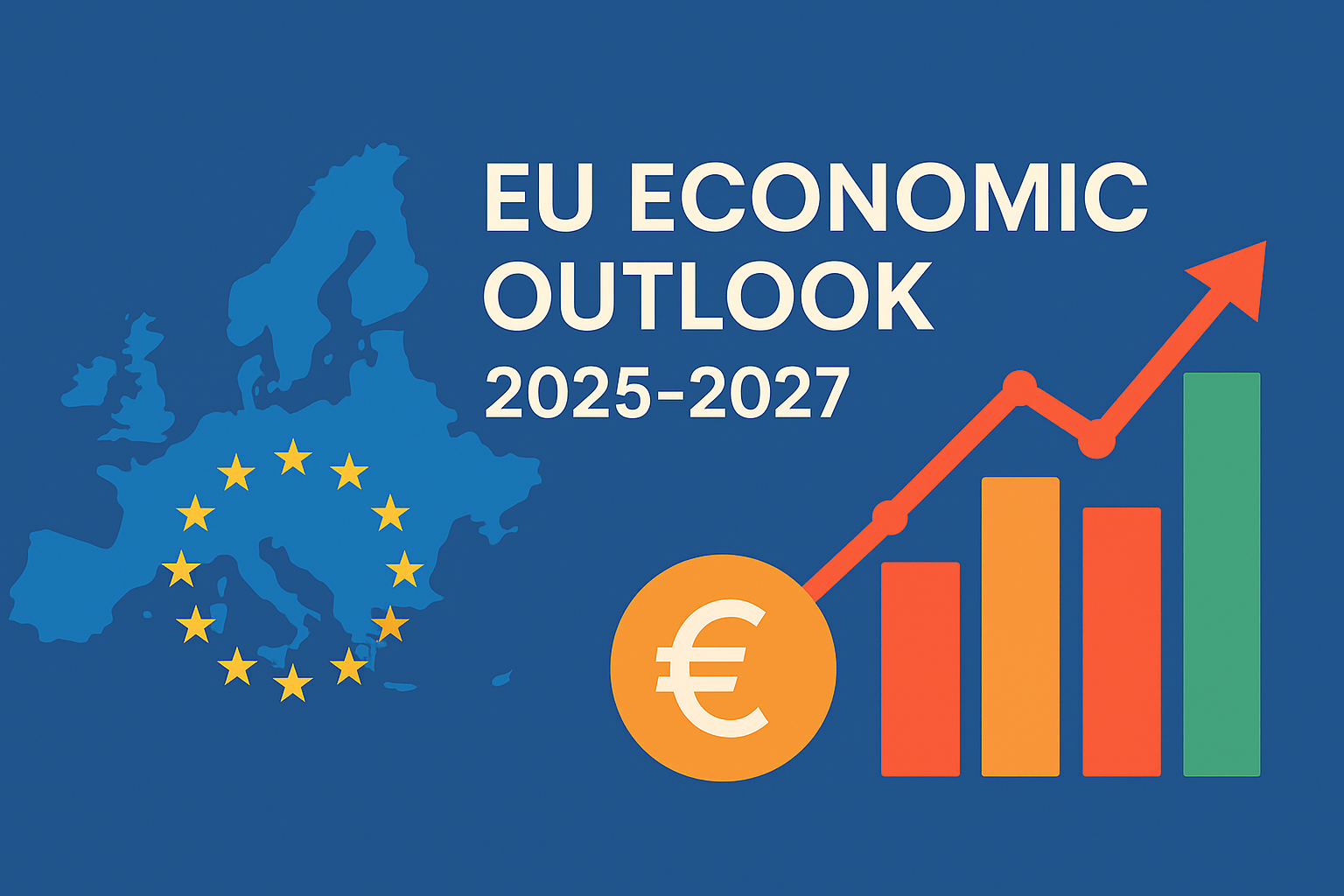– Strategic Risk Assessment and Japan’s Response to Middle East Geopolitical Tensions –
- Strategic Importance of the Strait of Hormuz
- Structure of the Blockade Scenarios and Economic Transmission
- Country-Specific Impacts and Strategic Responses
- Global Macroeconomic Scenarios
- Japan’s Economic Vulnerabilities
- Policy Recommendations
- Japan’s Diplomatic Role
- Conclusion: From Crisis to Strategic Transformation
Strategic Importance of the Strait of Hormuz
The Strait of Hormuz is a critical maritime chokepoint, with over 20% of the world’s oil supply (approx. 20 million barrels per day) passing through it. It serves as the main export route for oil and liquefied natural gas (LNG) from key Gulf producers such as Iran, Saudi Arabia, the UAE, Iraq, and Kuwait. A disruption or blockade of this corridor would trigger a global energy shock, supply chain disruptions, and cascading macroeconomic and geopolitical consequences.
Structure of the Blockade Scenarios and Economic Transmission
Stages of Escalation and Potential Impacts
| Phase | Scenario | Oil Price | Economic Reach |
|---|---|---|---|
| Phase 1 | Maritime inspections, rising tension | $100 | Short-term inflationary shock |
| Phase 2 | Military blockade (mines, missiles) | $150–200 | Supply halt, inflation surge |
| Phase 3 | International intervention, protracted crisis | >$200 | Global recession, capital flight |
Shock Transmission Channels
- Energy Price Shock
→ Surge in global oil, gas, and electricity prices; impact strongest on net importers. - Financial Market Reaction
→ Risk-off sentiment; capital shifts to safe havens like gold and U.S. Treasuries; emerging market sell-offs. - Supply Chain Disruption
→ Severe impact on chemicals, fertilizers, aviation, and logistics industries.
Country-Specific Impacts and Strategic Responses
| Country/Region | Exposure Level | Expected Impact | Strategic Response |
|---|---|---|---|
| Japan | >90% of oil imports via Hormuz | Imported inflation, stagnant growth | Strategic reserve release, diversification (Indonesia, Australia) |
| United States | Largely energy independent | Support for allies, domestic price volatility | Military intervention, sanctions escalation |
| China | High oil import dependence | Currency pressure, growth slowdown | Energy diplomacy with Iran, reserve deployment |
| EU | Increasing post-Russia dependency | Renewed energy crisis, inflation | Storage enhancement, energy subsidies |
Global Macroeconomic Scenarios
| Scenario | Oil Price | World GDP Growth | Key Characteristics |
|---|---|---|---|
| Optimistic | $90–110 | –0.3 to –0.5 pts | Short-term disruption, resolved diplomatically |
| Moderate | $130–160 | –0.7 to –1.0 pts | Brief armed conflict, weeks-long supply issues |
| Pessimistic | >$180 | –1.5 pts or more | Protracted conflict, systemic recession risk |
Japan’s Economic Vulnerabilities
- Fiscal: Rising subsidy burdens; potential for expanded budget deficit
- Inflation: Cost-push inflation, real wage suppression
- Corporate Earnings: Margins squeezed due to input costs and declining consumption
Policy Recommendations
For the Japanese Government:
- Targeted release of strategic petroleum reserves
- Diversification of energy supply routes and partners (Indonesia, Australia, Canada)
- Currency and commodity hedging support schemes for private sector
- Logistics resilience strategy to reduce Middle East dependency
For Japanese Companies:
- Strengthen hedging strategies (commodities, currencies)
- Develop alternative supply chains outside the Gulf region
- Review and enhance business continuity plans (BCPs)
- Accelerate investment in renewable energy and energy efficiency
Japan’s Diplomatic Role
Japan holds a unique position as a country that maintains stable relations with the United States, Israel, and Iran. This opens the door for neutral mediation in Middle East diplomacy. Japan’s role as an energy-dependent but geopolitically neutral actor gives it leverage to advocate for de-escalation while securing its own economic interests.
Conclusion: From Crisis to Strategic Transformation
The closure of the Strait of Hormuz would be a systemic global risk and a stress test for Japan’s economy and energy security. However, it can also act as a catalyst for long-overdue reforms in energy strategy, trade logistics, and foreign policy. The key lies in a dual response: immediate mitigation and long-term structural transformation.


